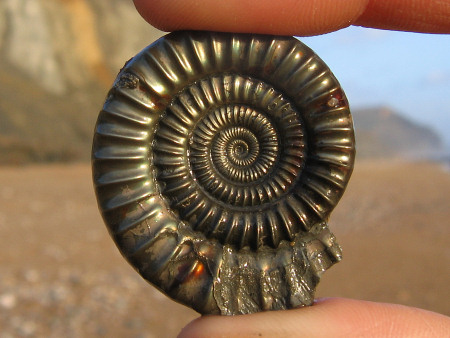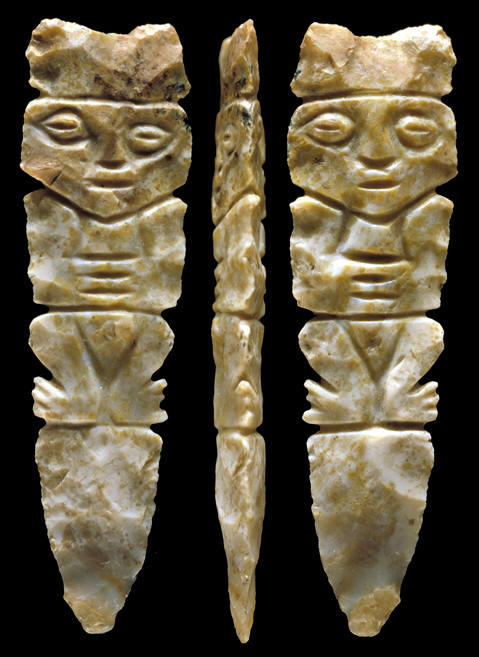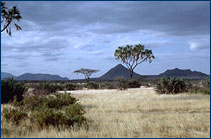History 8 Human Origins Vocabulary
Return to Main Page History 8
Work must be supported with citation of source. Manual may be noted with CF Manual and page numbers). Any information from class notes may be cited as Class notes (date of lecture)or from a video Name of Video. You may not use Wikipedia as a source. Please sign your entry.
Vocabulary
1.australopithecines- Australopithecines were a genus of early hominoids that lived from about 5.6 MYA to about 1 million BC. [1] About 6 MYA, the jungles that covered Africa began to dry out, and food supply became low. In this situation, the human group was the least susceptible to survive, so they were forced out into the grassland. These early hominoids were forced to adapt. Examples: opposable thumbs and bipedal stance needed for throwing well, hip joints needed to change so that legs aligned with the backbone. Ankles became stronger and less flexible. Big toe became in alignment with the other toes, allowing it to take on the weight of the body. Also, the hole where the spinal column connects to the brain moved the the center of the skull, allowing the spinal cord to run perpendicular to the ground. End the end, the Australopithecines that did not adapt quick enough became extinct about 1 million B.C.[2]
-Emily Pedrick
sources
- ↑ http://www.iscid.org/encyclopedia/Australopithecines viewed 9/15/2012 ©2005
- ↑ CF Manual pages 20-21 viewed 9/15/2012
- ↑ http://zinjanthropus.wordpress.com/2008/11/10/intro-to-australopiths/ Viewed 9/14/2012, ©2008
2. fossils -Arisa Sadeghpour
According to Roy Sheperd, a fossil is "the physical evidence of former life from a period of time prior to recorded human history." Fossils can be used to interpret the past, and are a key role in our understanding of the past today. For example, the fossils of the first bipeds show many different changes and characteristics from the bipeds' ancestors. Changes in anatomical structure, like skeletal, muscular, and neural changes to increase natural defenses, have allowed us to understand more about the distant past.
Sources:
CF Manual page 20
What is a Fossil? Discorvering Fossils, Sept 13, 2012, http://www.discoveringfossils.co.uk/whatisafossil.htm,

3.bipeds/bipedalism- In a biped, the spinal cord runs perpendicular to the jaw and the ground. If bipedals did not have this shift, than they would not be able to hold there heads upright, and their vision would be limited. Bipedalism or only moving with two limbs, is less efficient than moving on all four limbs, which is way that apes, or quadrupeds move. Quadrupeds have the ability to move faster than bipedals, because quadrupeds have the advantage of running on four legs, which makes bipedalism less efficient.
Sources:
1. CF Manual page 21

-Sam Schneider
4. foramen magnum
The foramen magnum is the hole in the skull that the spinal column passes through. Its placement differs depending on the creature and its traits. For example, since humans are bipedals and walk with our heads up, our foramen magnum is placed in the middle-bottom of the head, while dogs, which walk on all fours, have their foramen cranium in the back (bottom) of their head. Thus the placement is directly related to the orientation of the cranium. The placement of the human cranium is very important, since if it were where a dog's is, it would be very hard to see and walk, and it would also be uncomfortable. This brings in Darwin's theory of natural selection; the creatures with the foramen magnum in the middle of the head were superior to the others, at least in the case of hominids. For picture please see "http://www.google.com/imgres?num=10&hl=en&safe=active&biw=1366&bih=643&tbm=isch&tbnid=1gbUgI6WMEq9WM:&imgrefurl=http://faculty.washington.edu/chudler/skull.html&docid=1LaEXoe-jx9ZSM&imgurl=http://faculty.washington.edu/chudler/gif/foramen.gif&w=252&h=274&ei=UCFZUKnbFqOWyAHVzYDoBQ&zoom=1&iact=hc&vpx=184&vpy=139&dur=955&hovh=219&hovw=201&tx=80&ty=101&sig=114898400565288338862&page=1&tbnh=139&tbnw=128&start=0&ndsp=21&ved=1t:429,r:0,s:0,i:76"
- Austin Schultz
Sources:
History Manual Page 21 Paragraph 1 Picture: http://faculty.washington.edu/chudler/skull.html
5. cranium
The proper definition of cranium is the part of the skull that encloses the brain.The australopithecines were able to stand up right due to the fact that a large hole at the lower area of their craniums called the foramen magnum is directly related to the placement of the cranium. The properly placed foramen magnum on a biped enabled australopithecines to stand up straight and look up ahead, expanding their vision.

Sources:
[Manual Pages 21&22]
[Dictionary.com]
[uoregon.edu]
-Jaelynn Walls
6. savanna
The savanna is grassland scattered with shrubs and isolated trees. Savannas are found in warm to hot climates where the average rainfall is about 30-40 inches per year. They cover almost half the surface of Africa, as well as large portions of Australia, South America, and India. The soil of the savanna is porous, with rapid drainage of water. It has a thin layer of organic soil, called humus, which provides vegetation and nutrients. Savannas both have wet and dry seasons. The beginning of the dry season is indicated in October through series of violent thunderstorms and drying winds. Fires are prevalent throughout this season. In, March thunder storms drive again, this time signifying the start of the rainy season. [1] The savanna is the home to many different animals, including the African elephant, cheetah, gazelle, giraffe, and hippopotamus. [2] The savanna is an important biome for many animals and the ecosystem.
Savanna in the Samburu Game Preserve, Kenya.
Sources:
- 4. [1]
- 5. [2]
- 6. [3]
By Jeffrey Wang
7. hominid
The immediate ancestors of humans were members of the genus Australopithecus. The australopithecines were intermediate between apes and people. Both australopithecines and humans are biologically similar enough to be classified as members of the same biological tribe, the Hominini. All people, past and present, along with the australopithecines are hominins. We share in common the fact that we evolved from the same ape ancestors in Africa but that both genera are habitually bipedal, or two-footed, upright walkers. Although the hominid fossil record is far from complete, and the evidence is often fragmentary, there is enough to give a good outline of the evolutionary history of humans. The earliest australopithecines very likely did not evolve until 5 million years ago or shortly thereafter in East Africa. By about 4.2 million years ago, unquestionable australopithecines were present. By 3 million years ago, they were common in both East and South Africa. As the australopithecines evolved, they exploited more types of environments. Their early proto-hominin ancestors had been predominantly tropical forest animals. However, African forests were progressively giving way to savannas. The australopithecines took advantage of these new conditions. In the more open environments, bipedalism would very likely have been an advantage. Yet, they still needed to evolve to survive in the new environment. Hominids probably used their hands in aggressive displays, such as hurling stones or sticks at predators. An accurate throw requires an opposable thumb grip. Their hip joints were modified so that their legs could align with their backbone, and their knees had grown closer together in order to bear the total body weight more efficiently. Because of standing on two legs, hominids’ brains quadrupled during their lifetimes. The soles of their feet had grown arched rather than flat. By 2.5 million years ago, there were at least 2 evolutionary lines of hominins descended from the early australopithecines. One line apparently was adapted primarily to the food resources in lake margin grassland environments and had an omnivorous diet that increasingly included meat. Meat in their diet provided them with an opportunity for social activity. Among them were our early human ancestors who started to make stone tools by this time. The other line seems to have lived more in mixed grassland and woodland environments, like the earlier australopithecines, and was primarily vegetarian. This second, more conservative line of early hominins died out by 1 million years ago or shortly before then.
[[4]]
Sophie Worscheh
Link: http://anthro.palomar.edu/hominid/australo_1.htm Link: http://www.talkorigins.org/faqs/homs/species.html: History Manuel Picture: http://www.amnh.org/education/resources/rfl/web/hhoguide/family-tree.html
8. Oldowan Tools
The very earliest known tools, created by early hominoids, specifically Homo Habilis, were called Oldowan tools. These tools were created around 2.5-1.2 MYA by chipping stones together, forming a sharp edge, sometimes made by using one strike which creating sharp-edged flakes. From looking at bones from Homo Habilis sites, scientists can infer that these tools were mainly using for hunting and butchering prey. Because of this discovery, we can assume that these hominoids included meat in their diets. These tools were first discovered in Olduvai Gorge in Tanzania and the oldest tools have been found at Gona, Ethiopia. Also, this technology is represented by "choppers", or stones with flakes removed, creating a sharp edge. Scientists who have taken very close looks, using a microscope, have concluded that not only were these tools used for butchering animals, but also for cutting plants.
Sources: http://anthromuseum.missouri.edu/minigalleries/handaxes/intro.shtml
Manual page 22
By Alden Arnold
9. herbivores An herbivore is an animal that gets its energy from eating only plants. For example, antelope, cows, and moose. To learn more got to: [5] Lauren Biegel 10. marrow Marrow is the calorie rich soft tissue found inside bones. Homo Habilis used Oldowan tools to crack open bones so they could eat the marrow. to learn more go to: [6] or Manual Page. 22 Lauren Biegel 11. sweating
12. panting
13. browridge
14. Acheulean tools
Acheulean tools appeared around 1.6 million years ago, and came after the invention of Oldowan tools. Acheulean tools were primarily axes and cleavers. They were used by Western H. erectus and H. ergaster. The three key innovations are: (1) a symmetrical cutting edge formed by chipping the stone from both sides; (2) The stones were now shaped into a recognizable tool form that was repeated; (3) The tool form changed based on what is was going to be used for. These tools are best characterized by hand axes. The axes were normally pear shaped, teardrop shaped, or rounded, and 12-20 cm long. Acheulean tools get their name from the site where they were first discovered, which was at St. Acheul along the Somme River in France in 1847. They have been found from southern Africa to northern Europe and from western Europe to the Indian sub-continent.


Acheulean Handaxes
Information from:
Manual Page 25
http://anthromuseum.missouri.edu/minigalleries/handaxes/intro.shtml
Image from:
http://anthromuseum.missouri.edu/minigalleries/handaxes/1980-1008-handaxe-acheulean.shtm
-Gwendelyn Butler
15. bifacial
Bifacial means symmetrical. Acheulean tools were bifacial because they were flaked over, whereas Oldowan tools were not bifacial because they were only flaked over on one side. Bifacial tools were more uniform and more easily replicated. Bifacial tools are not based on function and were created primarily as a matter of convention rather than analytical procedure. Many projectile points and cores are often bifacial, and so are many knives, preforms, and axes. There are two kinds of bifaces, early-stage and late-stage. Early-stage exhibit random flaking caused by hard hammer concussion appearing as deep, wide scars. Late-stage bifaces display a greater width to thickness ratio, showing that there was further thinning. They also have a greater degree of shaping and straighter edges, suggesting shaping that was designed and patterns.

A Bifacial Artifact. As you can see, it is very similar on both sides.
Information from:
Manual Page 25
http://www.sanjuancollege.edu/pages/2132.asp
http://anthromuseum.missouri.edu/minigalleries/handaxes/1980-1008-handaxe-acheulean.shtm
http://www.deldot.gov/archaeology/lums_pond/pdf/vol2/lums_vol2_artifact.pdf
Image From:
-Gwendelyn Butler
16. interglacials
An interglacial period is a time in history without large ice sheets covering the Earth's surface. A glacial period, or an Ice Age, is a time when the Earth's surface is covered with an extremely large amount of ice sheets. About every hundred thousand years, the world switches between interglacial and glacial periods. During interglacial periods, regions near the equator encounter a lot of rainfall, whereas the northern and southern regions have more temperate climates. After a while though, the poles become colder and colder which causes ice sheets to travel over a lot of Europe and North America. It also causes extremely cold weather in Northern Asia but with no ice sheets because there is not a sufficient amount of moisture. This starts the next ice age. Glacial and interglacial periods are formed because of variations of Earth's orbit, which cause the Earth to get different amounts of solar radiation. Interglacial periods occur when the Earth receives the most solar radiation, and glacial periods occur when the Earth receives only a little bit of solar radiation.

Sources: Manual Page 26, http://www.ncdc.noaa.gov/paleo/abrupt/data2.html http://www.zonu.com/detail-en/2010-01-22-11731/Antarctic-ice-sheet-interglacial-period.html
Cam Cook
17. Sunda
During the last Ice Age's peak which was about 18,000 years ago, the temperatures were about 65 degrees Fahrenheit lower than they are today. This caused ice sheets to cover a fourth to a third of the entire Earth's surface. Because so much of the world's water was frozen due to the extreme climate, the sea level dropped 410 feet, which exposed a lot of land that used to be sea beds. As a result, a new continent formed, with the land known as the Sunda connecting southern Asia with the islands of Indonesia. This made the continent of Asia much larger for the remaining time of the Ice Age. This land bridge helped the Neanderthals and many other animals migrate from Asia to Indonesia, or from Indonesia to Asia. It was then flooded when the ice sheets receded and melted into the ocean, causing the sea level to rise to its current height today. Currently, this part of the ocean is referred to as the Sundra Strait.

Sources: Manual Page 26, http://www.valdostamuseum.org/hamsmith/iceciv.html http://www.the-truth-seekers.org/Sunda.htm
Cam Cook
18. Beringia
Around 18,000 years ago there was a great Ice Age that caused ice sheets to cover a fourth to a third of Earth's surface. These ice sheets spread from the poles and covered a lot of North America, Europe and the ocean near Antarctica. This took up a lot of the ocean water near the North and South Poles which caused a drop in the sea level of 410 feet. Because of this, the oceans receded and revealed land that used to be underwater. Some of this land formed bridges between two places. Beringia was a land bridge that formed this way and connected Siberia with Alaska. There is a great possibility that Neanderthals traveled from Asia to America on this. These Neanderthals then probably evolved into modern day humans. This is one of the many theories that explains how humans migrated to America. After the Ice Age, the ice melted, covering Beringia with water. This area of the ocean is now known as the Bering Strait.

Sources: Manual Page 26, http://weber.ucsd.edu/~dkjordan/arch/beringia.html http://history-with-a-twist.webs.com/northamericandiscovery.htm
Cam Cook
19. loess
During Ice Ages, a large portion of the Earth was covered with ice, but most of the world was still solid ground. This majorly changed the climate of the world. First of all, it made rainfall levels drop a significant amount which made the ground very dry. It also made the land much colder than it is today, causing the most of the ground to harden and freeze. Finally, wind was much stronger during Ice Ages. All of these factors caused large amounts of dust to build up or scatter around the world. This dust is referred to as loess. Large deposits of loess usually built up right next to continental glaciers because wind dropped it there. Some of the glaciers might melt and form streams that went through the loess, transporting it, at times, long distances. Wind could also move it large distances and cause giant dust storms. When the wind or water slowed, it dropped the loess where it would build up many meters high.

Sources: Manual Page 26, http://exhibits.museum.state.il.us/exhibits/larson/loess.html http://earthobservatory.nasa.gov/Features/Paleoclimatology_Speleothems/
Cam Cook
20. mammoths
21. prepared core
22. permafrost
23. burial
24. grave goods
25. archaic
26. frontal lobe
27. Shamanism
28. micro-flints
29. brunishers
30. burins
31. blade and burin
32. annealing
33. composite tools
34. hafting
35. migrational
36. nomadic
37. atlatl
38. egalitarian
39. knapper
40. microlith
41. diffusionist
42. ochre
43.dentalium
44. middens
45. horticulture
Cite error: <ref> tags exist, but no <references/> tag was found

